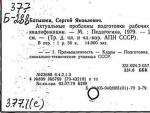Butter calorie content per 100g. Butter: chemical composition, nutritional value, benefits and harms, reviews
Butter is incredibly tasty and is a key product derived from cow's milk. However, it also represents a high concentration of milk fat, which is about 80 percent.
Today we will tell you how many calories are in butter, what types it can be divided into and whether it is useful for losing weight.
Classification of butter
The milk fats contained in it are very nutritious and healthy. However, the calorie content of this creamy product is quite high. On average it is about 748 kcal per 100 grams of product.
It can be salted or unsalted. In the presence of salt, the shelf life of the product is longer, and it can also be of the following varieties:
- first;
- second;
- extra;
- higher.
However, these are not the only classifications of butter. It can also be sweet cream, that is, made from fresh cream (this variety is the most popular). There is also sour cream, which is made from lactic acid starters. Both varieties undergo pasteurization at a temperature of about 90 degrees. There is also a third type - Vologda cream, which is pasteurized at temperatures up to 98 degrees.
During production, butter may add different ingredients for taste:
- vanillin;
- cocoa;
- sugar;
- berry and fruit juices.
However, these additives do not particularly affect the calorie content of products.
Types of butter by calorie and fat content
The number of calories in butter and its fat content depends on their type. We present the most famous of them:

As you can see, the higher the fat content of butter, the more natural it is. When purchasing a product whose fat content is less than 82.5%, remember that this is no longer a product in its natural form, but spread with the addition of certain substances.
Product quality criteria
High-quality butter harmoniously combines aroma and taste; it contains no foreign odors or tastes. The color of such a product will be either white or pale yellowish, and it should be uniform. If you buy salted products, then the percentage of salt in it should be no more than 2%, and it should also be evenly salted.
Is it possible to use oil for weight loss?
 Despite the fact that this is a high-calorie product, even when losing weight, you can consume up to 2 teaspoons of oil per day. This will keep you healthy while on a diet that includes low amounts of fat in other foods.
Despite the fact that this is a high-calorie product, even when losing weight, you can consume up to 2 teaspoons of oil per day. This will keep you healthy while on a diet that includes low amounts of fat in other foods.
Most strict diets exclude fats, but many girls do so because of their lack in the body. face such problems, How:
- brittle nails;
- dull hair;
- the appearance of cracks on the lips;
- peeling of the skin.
Therefore, you can afford one sandwich with it a day even with a strict diet for your own good.
The benefits and harms of butter
Due to its high calorie content, butter is not recommended to be consumed in large quantities. And in small doses it is very beneficial for health. So, its regular presence in the form of sandwiches or as a dressing for cereals or soups on the menu gives you strength and energy and helps renew your cells.
Scientists have concluded that a lack of substances contained in oil in a child can cause mental retardation. And vitamin A is very useful for diseases of the stomach and duodenum. In addition, thanks to its use, wounds from these diseases heal faster.
But there is also a downside to this product. In particular, it contains large amounts of cholesterol. That is why the daily oil consumption should not exceed 20 grams. With this amount, your cholesterol levels will remain the same and you will not gain excess weight. Those who are on a diet for weight loss also need to control the consumption of this product.
Use in cooking
 Butter is a must-have ingredient for many dishes. The simplest is a standard sandwich with it, which, if desired, can be supplemented with meat, cheese, caviar or something else.
Butter is a must-have ingredient for many dishes. The simplest is a standard sandwich with it, which, if desired, can be supplemented with meat, cheese, caviar or something else.
This product is used to improve the taste of the following dishes:
- side dishes;
- porridge;
- meat;
- fish dishes.
Also based on it sauces are made To do this, butter is mixed with a small amount of flour. It is also used to prepare dough and to improve the taste of soups and broths.
Oil is an essential product that is found in the refrigerator in almost every home. The main rule is to consume it within reasonable limits, then this product will not be dangerous either for your figure or for your health in general, but even vice versa.
The diet of a healthy person includes fats, proteins, carbohydrates, and vitamins. Butter is a necessary and valuable product for the life of the body, and it is very tasty. The modern dairy products market provides a huge selection of these products. It is important to be able to distinguish true oil from a low-quality product. Butter, the calorie content of which is below 82.5%, does not belong to the quality category. The same applies if it is made with the addition of substitutes.
Calorie content, chemical composition and fat content

From this classification it becomes clear that the naturalness of butter depends on its fat content.
The fattest butter is ghee. Manufacturers achieved a high rate (98%) by removing sugar, water and proteins from natural butter.
How to choose a quality product
When producing butter, it is permissible to add some ingredients that do not affect the number of calories, but can enrich the taste. These are products such as berry and fruit juices, cocoa, honey, vanillin, sugar.
What you need to know about the quality of oil so as not to buy a fake in a beautiful wrapper:
- Natural oil dissolves evenly in hot water;
- Margarine will break into pieces in such an environment;
- A real product from the freezer will take a long time to defrost;
- The spread can easily be spread on bread in just five minutes.
How much can you use?
Butter has become a part of our lives. Morning breakfast is not complete without a sandwich with butter, cheese, sausage and a cup of coffee. We also use this “menu” when traveling. Baking is generally unimaginable without this product, and it is also present in recipes for various dishes and dressings. Is it possible to use it a lot and often, or not?
It is not recommended to consume a high-calorie product in large quantities. Small portions are healthy and necessary. They give energy, strength, and promote cell renewal. Various studies have shown that vitamin A contained in butter is not only useful, it is simply necessary for people with diseases of the stomach and duodenum (gastritis, ulcers), and promotes faster healing of wounds. By the way, if a child is limited in oil consumption, he will not receive the beneficial substances contained in the product. This can cause mental retardation in the baby.
But a lot doesn’t mean it’s useful. In everything it is necessary to observe moderation and in the use of oil as well. A large amount of cholesterol in it can lead to excess weight gain, and ultimately obesity. Therefore, it is necessary to control its intake - the daily norm is no more than twenty grams. In this case, your cholesterol level will remain the same and you will not be overweight.
Butter is an amazingly healthy product, which many unjustifiably consider to be a source of “harmful” foods. In reality this is not the case. By including oil in your diet, you will improve your health, because it contains vitamins A, E, D, K and a lot of useful minerals. From this article you will learn how many calories are in butter, and whether it can be consumed when losing weight.
Calorie content of butter
Depending on the variety and fat content, the calorie content of butter can vary significantly. Let's look at the most popular types of butter:
- Traditional oil– 82.5% fat content. This product is the most natural; it almost never contains various vegetable and other fats designed to reduce the cost of the product. As a rule, the price for such butter is quite high, but it is a real, classic version of a product made from heavily whipped cream. Its calorie content is 748 kcal per 100 g, of which 0.5 g of protein, 82.5 g of fat and 0.8 g of carbohydrates.
- Amateur oil– 78-80% fat content. This product is a little lighter, and at the same time a little less natural than traditional oil, because the calorie content is reduced by adding other, lighter components. The energy value of this product is 709 kcal, of which 0.7 g of protein, 78 g of fat and 1 g of carbohydrates.
- Peasant oil– 72.5% fat content. This is the most popular product - many people buy it because it is presented in a wide range and, as a rule, is cheaper than traditional oil. However, it’s worth thinking about: what was added to the oil that caused its fat content to decrease by as much as 10 units? If you are not afraid of the presence of chemically lightened vegetable fats in the oil, then you can afford this option. Its energy value is 661 kcal per 100 g, of which 0.8 g of protein, 72.5 g of fat and 1.3 g of carbohydrates. Since this product is the most popular, we will use its example to consider various measures. So, for example, a teaspoon of butter has a calorie content of 33.1 kcal (it contains 5 g), and a small tablespoon contains 112.4 kcal (it contains 17 g of product).
- Sandwich butter– 61.5% fat content. This product spreads well on bread, does not crumble, is easy to use, but its composition contains not only butter, but also light vegetable fats, which reduce the calorie content and the final cost of the product. Its energy value is 556 kcal, of which 1.3 g protein, 61.5 g fat, 1.7 g carbohydrates.
- Tea oil– 50% fat content. This product is also a spread - a mixture of classic oil and vegetable fats, due to which it decreases. The energy value of this product is 546 kcal.
The high fat content of butter is an indicator of its natural origin. When purchasing any oil option other than 82.5% fat, you are not always sure  know what actually goes into it. Therefore, if you want to eat butter and not spread, you won’t be able to save money.
know what actually goes into it. Therefore, if you want to eat butter and not spread, you won’t be able to save money.
Butter for weight loss
Butter is a high-calorie product, but in amounts up to 10 g per day (that's about two teaspoons) it can still be included in your diet. This will allow you to maintain your beauty during a diet, especially if it is low in fat.
Due to a lack of fat on strict diets, many girls experience dull hair, brittle nails, cracked lips and flaky skin. A standard sandwich with butter (its calorie content is 80-100 kcal) for breakfast will save you from this problem.
Butter has been one of the staple human foods for many centuries. This product, obtained from cow's milk, has many beneficial properties. But recently, some people have begun to refuse it, considering it harmful due to the large amount of animal fats. The issue is still controversial, so to understand it, you need to study the chemical composition of butter, determine its calorie content and nutritional value.
general characteristics
Butter is obtained from natural cow's milk by churning the cream. It contains from 50 to 99% fat. And since it is milk fat, it contains all the microelements of milk. In fact, it is ordinary cream, from which the liquid has been removed in a special way, leaving only fats. Due to its high nutritional and energy value, butter is considered the best source of fat.
Oil was first used as food in ancient India about 4 thousand years ago. This product quickly became popular all over the world. By the 9th century, the oil had become widespread among the people. It was made independently from milk and cream. Due to the short shelf life, the oil was melted in a Russian oven. As a result, Russia has become a major supplier of ghee to the world market. And from the beginning of the 19th century, industrially produced butter began to be sold.
Butter production
To obtain a kilogram of butter, about 25 liters of natural cow's milk are processed. This is done using a separator. If it is melted, it becomes ghee. A real high-quality product is made completely without additives; it should only contain cream. If vegetable fats are added, it is no longer oil, but a spread.
Now on sale you can find several varieties of natural butter, the chemical composition of which is almost the same, the differences are only in calorie content and nutritional value. Their fat content is also different, and this can be determined by their name:
- tea oil contains only 50% fat;
- in a sandwich shop there are up to 61%;
- peasant - the most common, with a fat content of 72%;
- amateur contains about 80% fat;
- and traditional is the highest quality and fattest oil, it contains 82% fat.
In addition to regular sweet butter, you can find sour cream on sale. It is produced using leaven and has a specific taste and aroma. “Vologda” oil is also considered a separate variety. It is produced at a higher temperature than normal. Many people also like oil with various flavoring additives: fruit fillings, chocolate, vanillin.

Butter: chemical composition of the product
Like milk, it contains many health-promoting minerals. The oil contains the most potassium, calcium and phosphorus. Slightly less sodium and copper. It also contains zinc, iron and magnesium.
But if you look at the chemical composition of butter in detail, you can find other trace elements. It contains cholesterol, casein, lactose, many saturated and unsaturated fatty acids, linoleic and arachidonic acids, butyrate. Not all of these substances are equally useful. If you are intolerant to milk proteins, you can consume ghee, which does not contain lactose and casein. But fatty acids are necessary to maintain the normal functioning of all organs.

Nutritional value of 100 g butter
The amount of proteins, fats and carbohydrates differs from what is in milk. After all, butter is what is concentrated on the surface; it contains mainly milk fats (about 80 grams per 100). And all the proteins and carbohydrates remained in the milk. The chemical composition and nutritional value of butter show that it is not recommended to consume it in large quantities. After all, 100 g of product is one and a half times the daily fat intake. Although there are almost no proteins and carbohydrates in it, no more than 1%, and the calorie content is about 700 kcal per 100 g. But even a small portion of oil can provide the body with energy, as it is absorbed completely and quickly.

Useful properties of oil
It has long been known that dairy products contain many health-promoting nutrients. The chemical composition of butter proves this. But still, debates continue to this day whether this product is useful or harmful. Many believe that it leads to the accumulation of cholesterol and exacerbation of cardiovascular diseases. But in fact, when used correctly, this oil is not only beneficial for health, but often even necessary.
Butter has the following beneficial properties:
- easily digestible, improving digestion and intestinal function;
- has a high calorie content, providing the body with a large amount of energy;
- stimulates brain cell renewal;
- participates in the synthesis of sex hormones;
- contains many fat-soluble vitamins that ensure the normal condition of hair, skin and nails;
- reduces inflammatory processes;
- helps protect the body from hypothermia, which is why it is recommended to eat it in winter;
- improves the physical and mental development of children;
- accelerates the healing of the digestive tract mucosa during gastritis and peptic ulcers.

What harm can it do?
But despite the rich chemical composition and nutritional value of butter, it is not always healthy. Some people are advised not to use this product. This is due to the cholesterol content, which can be deposited on the walls of blood vessels. Therefore, it is contraindicated to eat it in case of obesity, acute heart failure, atherosclerosis, thrombosis, and after a stroke. You should not consume butter, like other dairy products, if you are lactose intolerant. In this case, flatulence, indigestion, diarrhea, and abdominal pain may occur.
How to use it correctly
The nutritional value of 100 grams of butter is such that it should not be consumed in large quantities. It is usually recommended to eat between 10 and 30 grams per day. It is important to choose the right oil when purchasing. It is recommended to purchase something that is wrapped in foil. This way, all its beneficial properties are better preserved, because in the light the oil quickly oxidizes. Therefore, it is better to store it in an opaque container in the refrigerator.
It is often recommended to replace butter with vegetable oil. But there are dishes that will become tasteless because of this. Traditionally, pancakes and pasta are eaten with butter. Porridge, both milk and regular, made with water also tastes better with it. Oil is added to baked goods, desserts, and soups. But the most common dish is a sandwich. The butter is spread on bread and combined with sausage, ham, cheese or jam. This is a wonderful and nutritious breakfast dish.

The calorie content of butter per 100 grams depends on the concentration of milk fat in the product. The most popular types of products will be discussed below.
Butter contains many vitamins and minerals, including vitamins A, B5, C, D, E, minerals sodium, potassium, phosphorus, and calcium.
Calorie content per 100 grams of butter 72.5% fat 661 kcal. 100 g of dairy product contains 0.8 g of protein, 72.5 g of fat, 1.3 g of carbohydrates.
The high fat content of butter indicates that its use should be avoided when losing weight, dieting or being overweight. In addition, butter is contraindicated during exacerbations of diseases of the pancreas, stomach, and intestines.
Calorie content of butter 82.5% per 100 grams
Calorie content per 100 grams of butter 82.5% fat 747 kcal. 100 g of product contains 0.4 g of protein, 82.5 g of fat, 0.9 g of carbohydrates.
The consumption of butter 82.5% is indicated during heavy physical and mental stress, that is, in situations where the body loses a lot of energy. As in the case of a product with 72 percent fat content, this oil should be avoided if you are overweight, losing weight, intolerant to milk fat, and in some other cases.
Calories of butter in 1 teaspoon
The calorie content of butter in 1 teaspoon depends on the type of product. Thus, one spoon of butter with 72.5% fat content contains 66.1 kcal, 0.08 g of protein, 7.25 g of fat, 0.13 g of carbohydrates.
A teaspoon of butter 82.5% fat contains 74.7 kcal, 0.04 g protein, 8.25 g fat, 0.09 g carbohydrates.
The benefits of butter
The benefits of butter have been known for a long time and are as follows:
- the product is rich in calcium, which is necessary to maintain healthy bone tissue;
- due to the content of B vitamins and iron, the oil is indicated for improving the condition of the muscular system, maintaining the health of the nervous system, nails, and hair;
- for ulcers and gastritis, butter consumed in small quantities envelops the mucous membranes of the gastrointestinal tract, providing a wound-healing effect;
- the oil is rich in vitamin A, therefore it is recommended for visual impairment and eye diseases;
- the vitamins and minerals of the product are useful for strengthening the immune system;
- The properties of butter to prevent asthma have been confirmed.
Harm of butter
If the product is abused, the following harms to butter are possible:
- extra pounds quickly gain, with “problem” areas especially affected – the stomach, double chin, thighs;
- when overeating the product, the likelihood of developing heart disease, blood vessels, and atherosclerosis increases (oil disrupts the cholesterol balance in the body, leading to the formation of atherosclerotic plaques blocking the lumens of blood vessels);
- Allergies and individual intolerance to the milk fats contained in butter often occur.
Norm of butter per day
It is very important to know the daily intake of butter. Nutritionists recommend eating no more than 15 g of product per day for children under 3 years of age, 20 g for children over 4 years of age.
The minimum daily amount of butter for a healthy adult is 10 g, the maximum is 30 g.








 Why do you dream of being a beggar?
Why do you dream of being a beggar? Read the book “Pastel Magic” online Read Pastel Magic
Read the book “Pastel Magic” online Read Pastel Magic Prophet's Church on Porokhov
Prophet's Church on Porokhov Toasts with garlic from black bread: recipe
Toasts with garlic from black bread: recipe